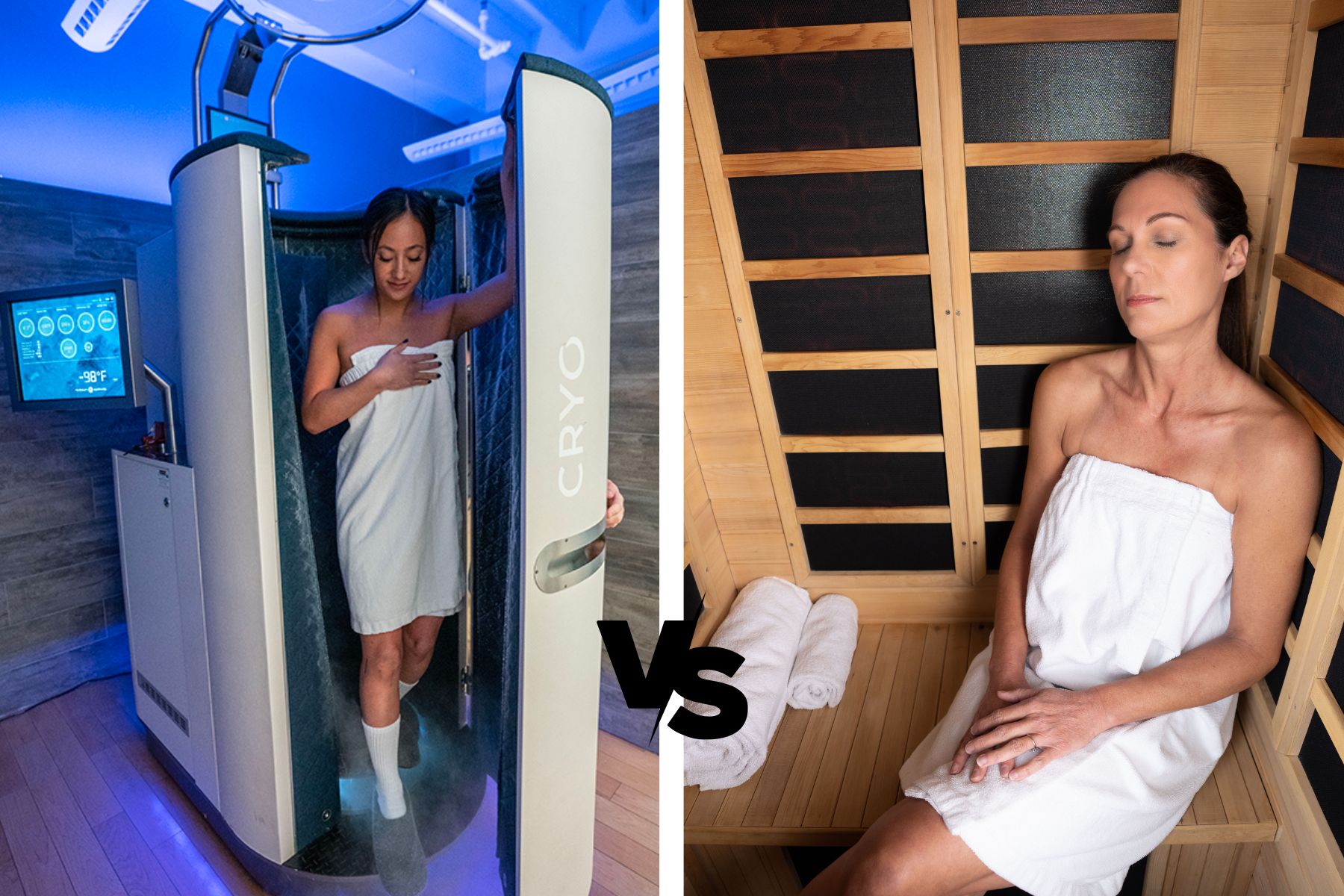Is hot or cold therapy right for you?
Hot and cold therapies treat a variety of symptoms; here's an idea of which one is right for you.

I often get asked by my clients, is hot or cold therapy better for me? The answer to this question is based off many factors, including but not limited to performance and recovery goals, acuteness vs chronicity of an injury, as well as health considerations.
Heat therapy
First, let’s talk heat therapy. Heat is used for many conditions and comes in a variety of forms. Heat increases blood flow and healing nutrients to a specific targeted area of the body. This can help reduce muscle soreness, chronic pain, morning stiffness, and also be used as an adjunct to warm up your body and muscles before an activity.
Some common forms of heat therapy include heat packs and infrared sauna. Heat packs can come in many forms, such as moist heat, heating pads, and gel packs. As mentioned previously, heat is best used when for treating chronic, longer lasting problems. Heat packs should be applied for 15–20 minutes at a time and skin should be monitored to avoid burns.
On the other hand, an infrared sauna uses infrared light to penetrate deep below the skin’s surface to help with vasodilation of capillaries, which increases oxygen and nutrients to muscle tissue, removal of toxins which helps with muscle recovery and reducing soreness. It also has the health benefits of improving sleep, joint pain, and lowering blood pressure. The proper dosing of infrared sauna is a usage frequency of 3–4x per week for 10–15 minutes for maximum benefit.
A regular sauna can also be beneficial in the use of relaxation techniques, muscle recovery, and stress relief. This is done by heating the surrounding area to approximately 190 degrees, which results in dry heat with low humidity. Combined with exercise, sauna has been shown to have positive impact on cardiorespiratory fitness and blood pressure. Recommended dosage is 20-30 minutes, 2-3x per week.
Cold therapy
Ice, on the other hand, helps to reduce acute inflammation by constricting blood vessels, which then inhibits the body from releasing inflammatory markers to the specific body area. Ice is best used after an acute injury such as an ankle sprain, or to help with swelling management after a surgery. Ice can be used in many forms but for the purpose of this article, we will focus on ice packs and cryotherapy.
Cryotherapy works by using fresh, oxygenated air of extreme cold temperatures approximately -200 to 300 degrees to reduce blood flow and inflammation to a particular area. Whole body cryotherapy is applied to the entire body to help with inflammation, reduce pain, and alleviate symptoms of various health issues, such as chronic pain or arthritis. Recommended dosage is 2–3 minutes per session, 2-3x per week at a temperature prescribed by your provider.
Local cryotherapy targets smaller and painful inflamed areas which can help with inflammation reduction, muscle recovery after a workout, and post-surgical pain. It can be applied to the ankle, shoulder, feet, elbow, knees, neck, etc. and the recommended dosage is 3–5 minutes per session, 2-3x per week.
Ice packs are most effective when used in 20-minute increments with 40+ minutes in between icing sessions. Ice packs are a form of local cryotherapy, but nitrogen-based cryotherapy units allow you to cover the entire service area more effectively around an injury, reaching typically inaccessible areas. For example, for a shoulder injury, local cryotherapy would allow you to treat the entire joint area. Cryotherapy also allows you to better control the temperature during the entire icing period. However, ice packs are much more commonly available to people at home, and still provide an effective form of therapy.
These modalities should be used in conjunction with physical therapy, personal training sessions, Pilates, or some form of exercise for maximum benefit. If you are unsure about whether heat or cold therapy is right for you, please ask your provider.

Gloria Christiano
Gloria Christiano, PT, DPT, is a physical therapist who treats a wide variety of sports-related injuries, general orthopedics, and has a clinical fondness for ACL rehabilitation and return to sport.
RECENT POSTS
CATEGORIES

> Privacy Practices
> Terms and Conditions
Copyright © Performance 2022.
All rights reserved.
JOIN OUR COMMUNITY
Sign up for our mailing list to learn more about Performance, stay up-to-date on our offerings, and receive our newsletter.
Digital Marketing by Rebel Interactive Group
